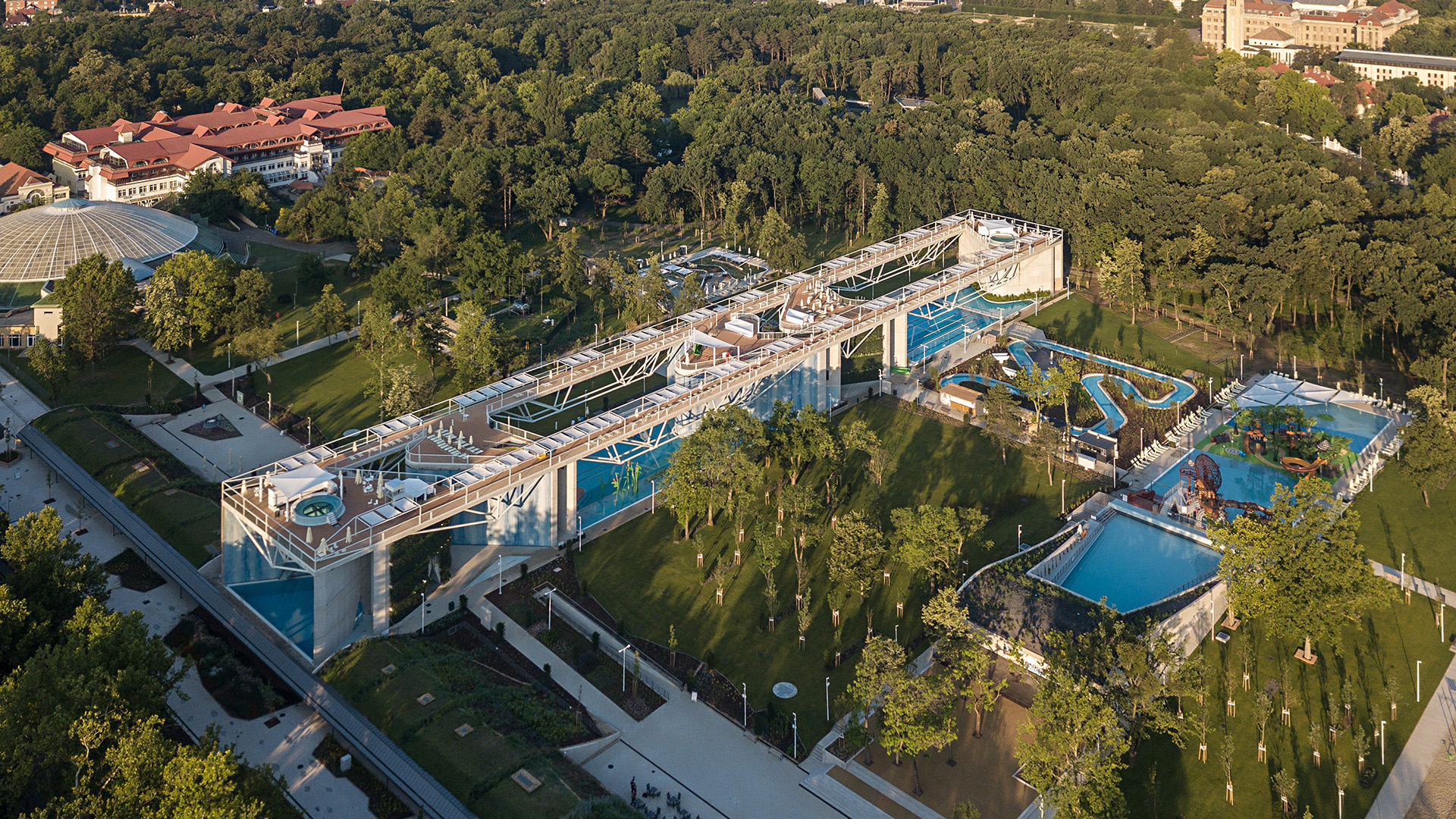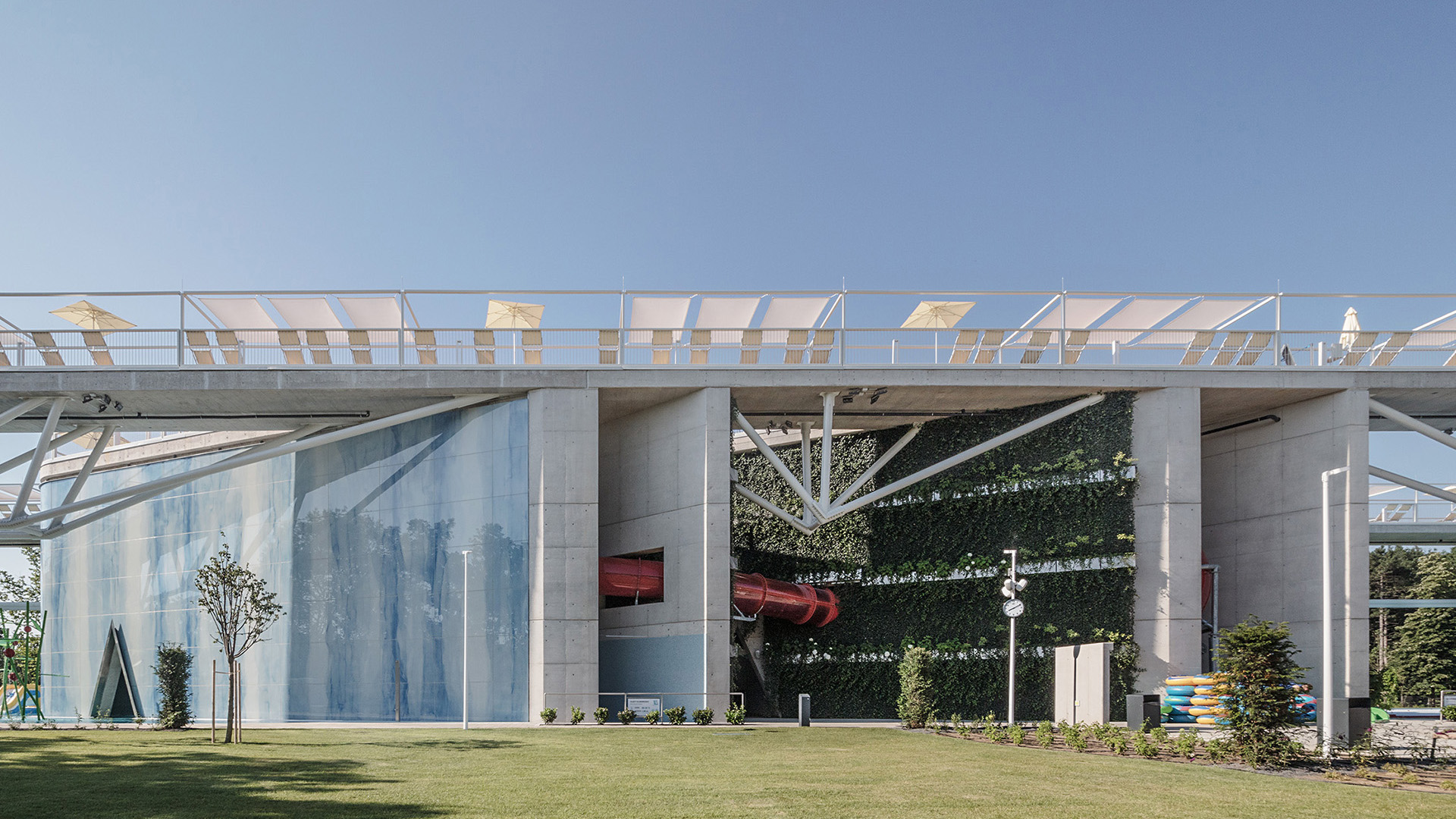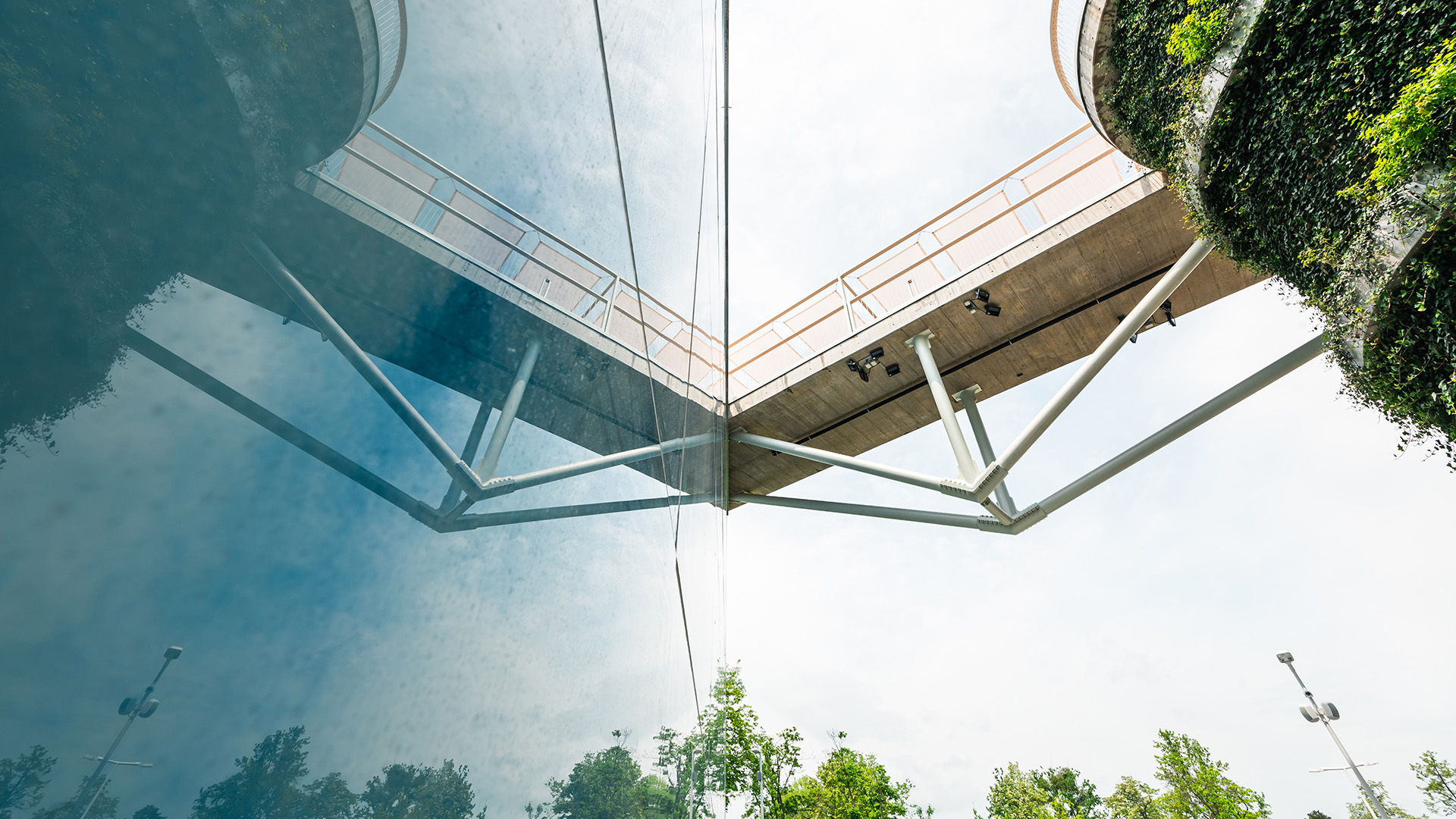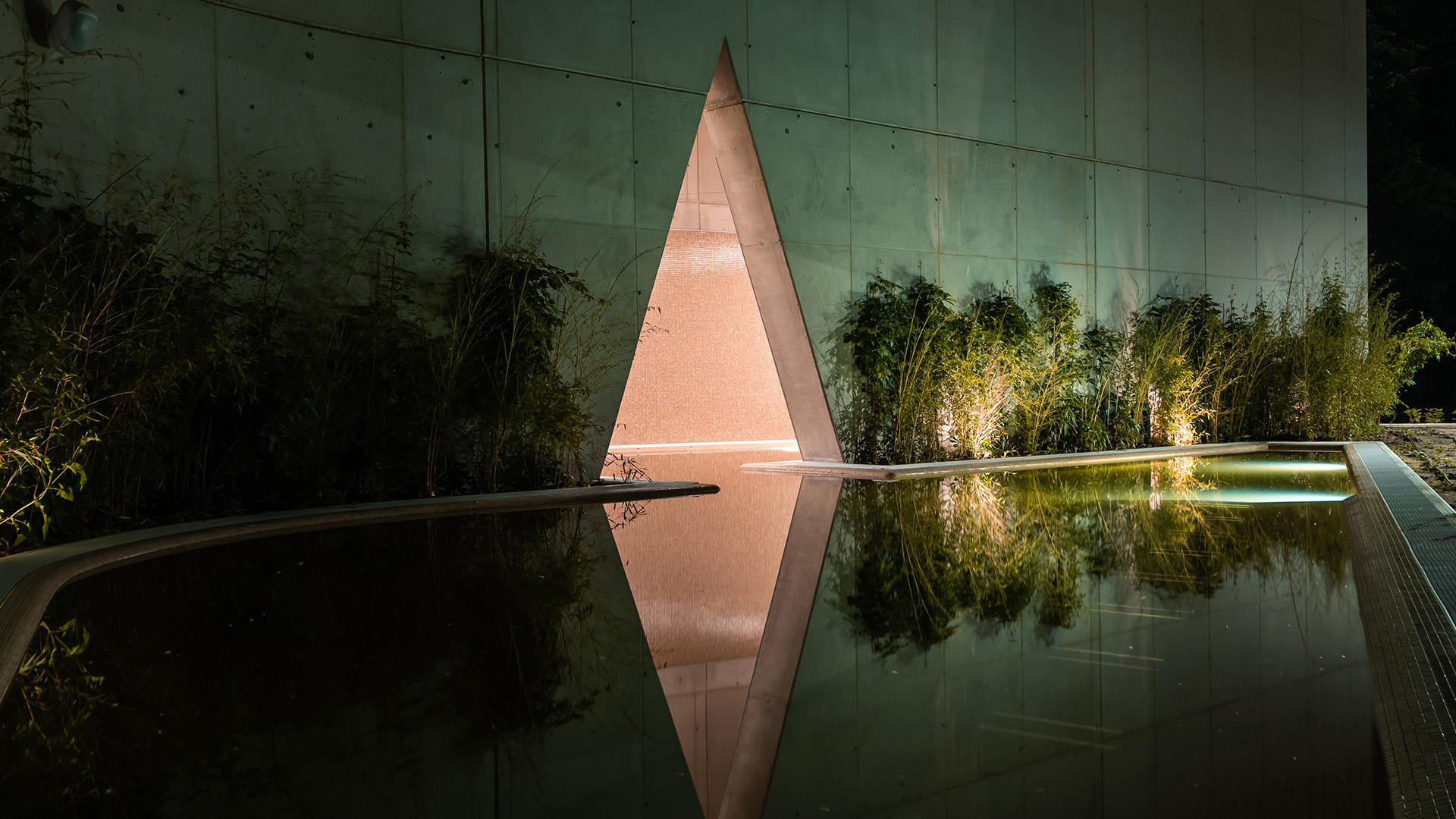How ‘green’ is the Aquaticum Thermal Spa in Debrecen?
January 21, 2021
The new Aquaticum Thermal Spa in Debrecen is not only unique in its architectural solutions but also stands out as a remarkable project by BORD Architecture Studio due to its high performance requirements and exceptional engineering solutions. The studio pays close attention to the use of renewable energy in all of its buildings, which was particularly important for a water-based facility of this scale.
What is the composition and approximate heating demand of the spa?
To understand this, several factors need to be considered. The spa contains numerous units that have significant heating requirements both in the summer (and in some cases, in the winter) such as hot water pools, changing rooms, showers, shops, restaurants, etc. Among these, the most significant “consumers” are the pools. The heating demand, of course, depends on various external factors, such as the number of bathers, weather conditions, and time of day. Taking the maximum visitor capacity into account, eight 2m³ hot water storage tanks (totaling 16m³) have been installed in the basement heat center of building “A.” The production of hot water also requires considerable heating.
Quantifying the heating demand, the spa requires approximately 6000 kW in summer and 393 kW in winter. For comparison, the neighboring Nagyerdei Stadium, with its field heating, requires around 2500 kW of energy. If we consider the summer heating demand of approximately 6000 kW for the spa, this power could potentially heat around 1700 new 70m² insulated apartments.
How does the spa heating system work?
The city’s district heating system is capable of providing the necessary power, but because the spa’s heating demand is significant, the BORD Building Engineering Studio has deployed every available “renewable energy” heating solution to ensure cost-effective operation. These solutions include, among others:
- The thermal water heat recovery from the thermal well.
- Further cooling of the thermal water that has been cooled back to 50°C using a heat pump, utilizing the released heat in the heating system.
- Additional cooling of the thermal water released from the thermal pools and collected in a buffer storage tank, using a heat pump.
- Cooling of the air handling units and fan coils in rental areas with water-to-water heat pumps, utilizing the heat released during the cooling process in the heating system.
- Utilization of the waste heat produced by the existing gas engine.
For each solution, the recoverable heat is used in parallel with plate heat exchangers connected to the spa’s central heating system’s return pipe. This means that the heat exchangers of the district heating plants can be hydraulically connected in series to the system.
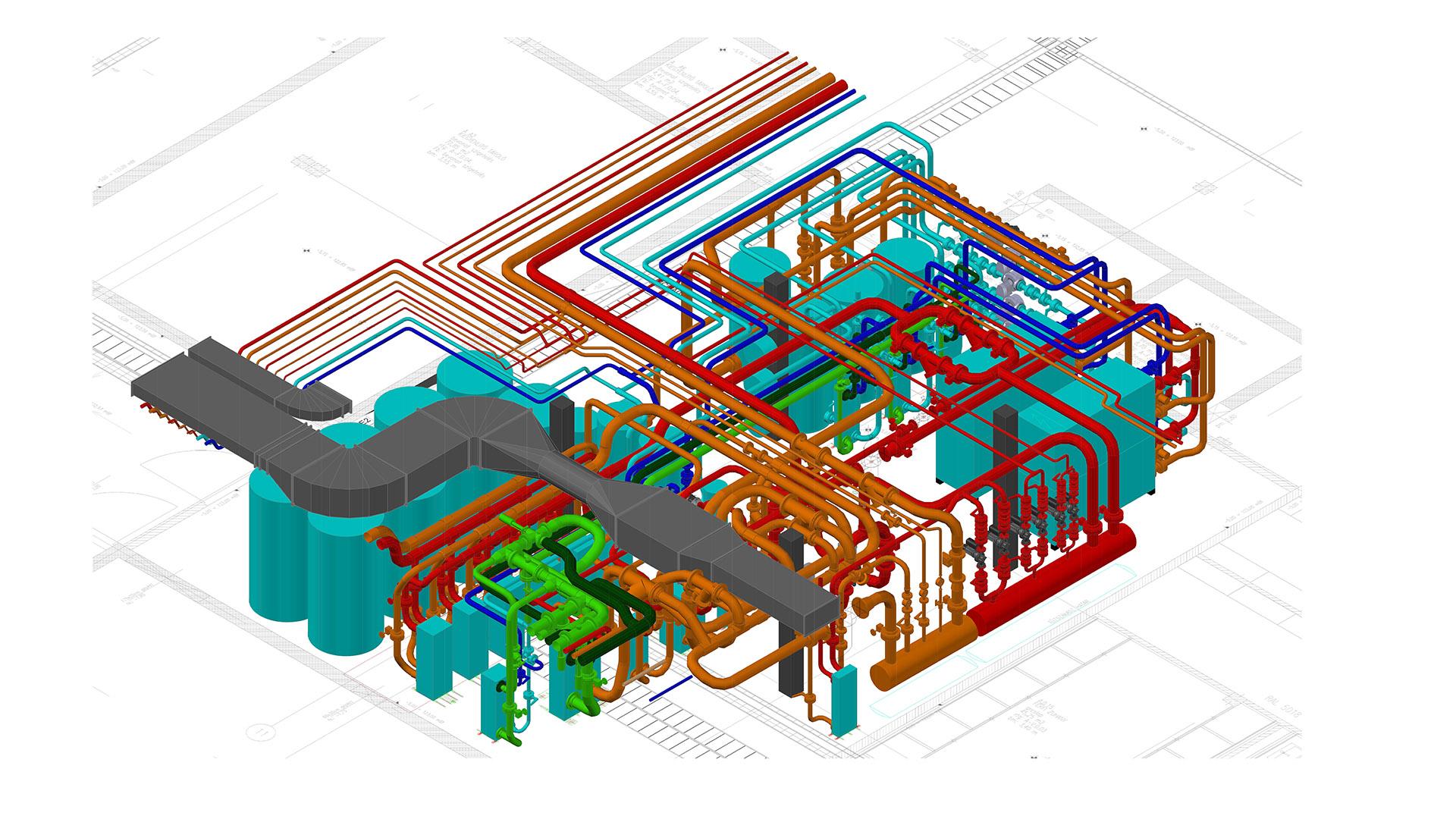
The BORD HVAC Engineering Studio has, as always with all our buildings, prioritized the utilization of renewable energy. According to current regulations, at least 25% of the total energy demand must come from renewable sources. For the spa, this figure is now approximately 50%, which aligns with the renewable energy usage of a modern building equipped with a heat pump. If the spa’s heating demand decreases, such as on a warm summer day, the proportion of renewable energy usage increases even further, potentially reaching up to 70%, which is considered outstanding.
How do renewable energies contribute to a more ‘green’ operation?
- The water coming from the thermal wells, with an average temperature of 60°C, can provide up to 1,500 kW of heating capacity. The further utilization of this thermal water, cooling it to 45°C through two water-to-water heat pumps and a plate heat exchanger, ensures an additional heating capacity of 300-600 kW.
- Given the high thermal water temperatures, a motorized three-way mixing valve bypass was installed in front of the plate heat exchangers on the water-to-water heat pump side to protect the equipment in each heating circuit.
- When recovering the necessary thermal water, the lower limit temperature of the thermal water is set to 45°C. This is the minimum thermal water temperature required for maintaining the thermal pools’ temperature in the summer, with minimal water replenishment. The second heat pump in the system extracts heat either from the incoming thermal water or the thermal water leaving the pools, in order to avoid overcooling.
- According to the temperature of the water leaving the pools, the central building control system manages the motorized valve placed on the cooling side of the heat pump to determine the direction from which heat should be extracted.
- The 32-34°C thermal water released from the pools is directed to an 84m³ reservoir located next to building “A.” The capacity of the reservoir is sufficient for storing the continuously discharged thermal water from the three pools, taking into account the minimum thermal water replacement required.
- The thermal water pumped from the reservoir is sent to plate heat exchangers placed in the main heat center in the basement of building “A,” where two water-to-water heat pumps—partly independent from and partly shared with the previous system—ensure heat recovery for the central heating system. The heating capacity extracted here is also 300-600 kW.
- Further heat recovery is possible through the water-to-water heat pump used for cooling the rental areas. The heat recovery on the condenser side of the heat pump, with a maximum designed capacity of 200 kW, varies depending on the utilization level of the restaurants and the outside temperature.
- In addition, there is a gas engine located on the spa grounds, whose waste heat is also utilized to raise the temperature of the return water in the heating system. The total waste heat produced by the gas engine is 200 kW.
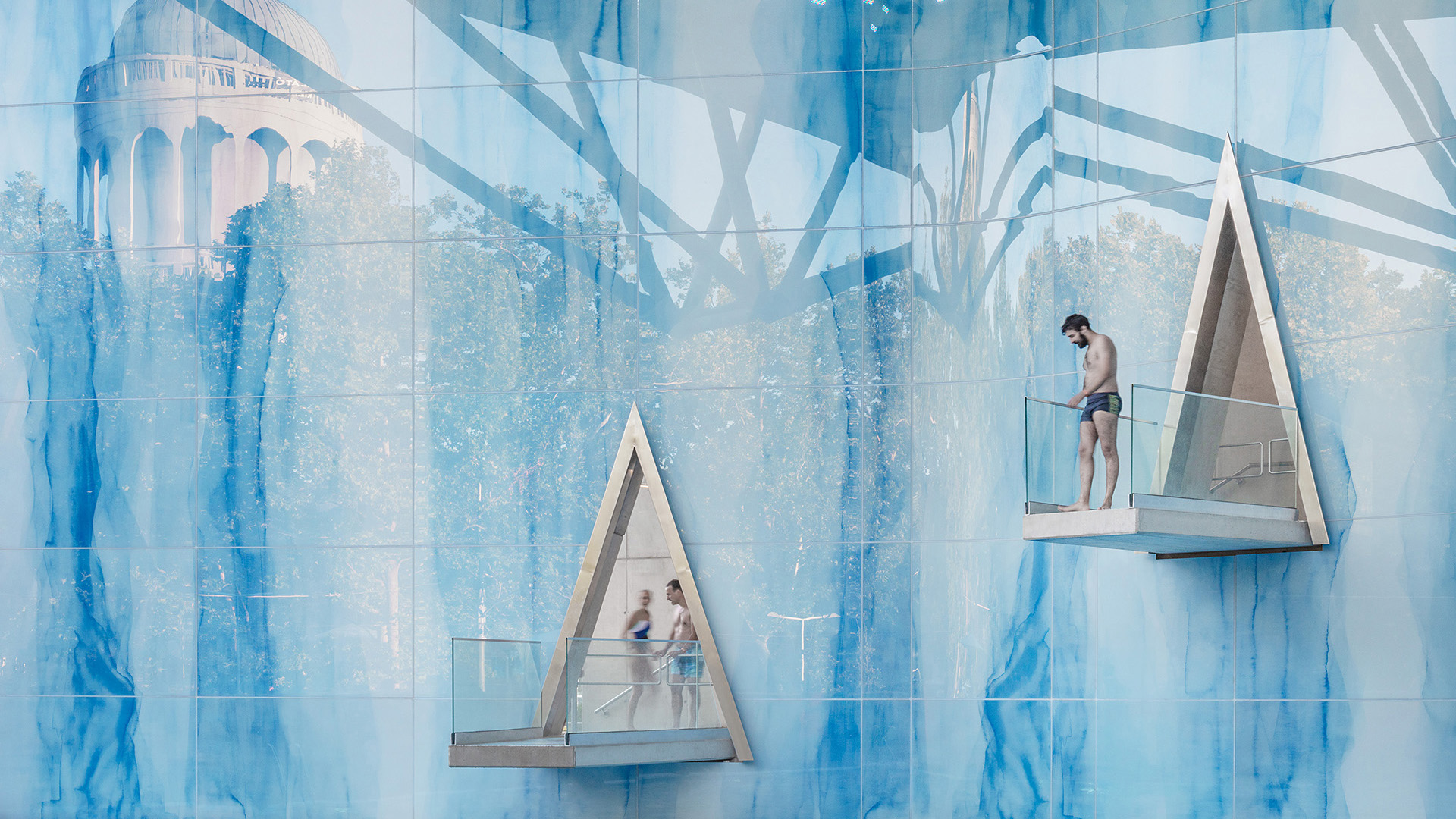
From the above, it is clear that by maximizing the use of renewable energy sources, the alternative heating solutions can ideally provide 2,800 kW of power, which accounts for nearly 50% of the total heating demand. The maximum demand is expected to occur only rarely, so for a significant part of the time, the share of renewable energy exceeds 50%. Thus, the BORD HVAC Engineering Studio has not only implemented the building’s ‘green concept’ from a technical perspective but also significantly contributed to ensuring that the spa facility represents the principles of BORD Architectural Studio, not only in its appearance but also in its operational solutions.
